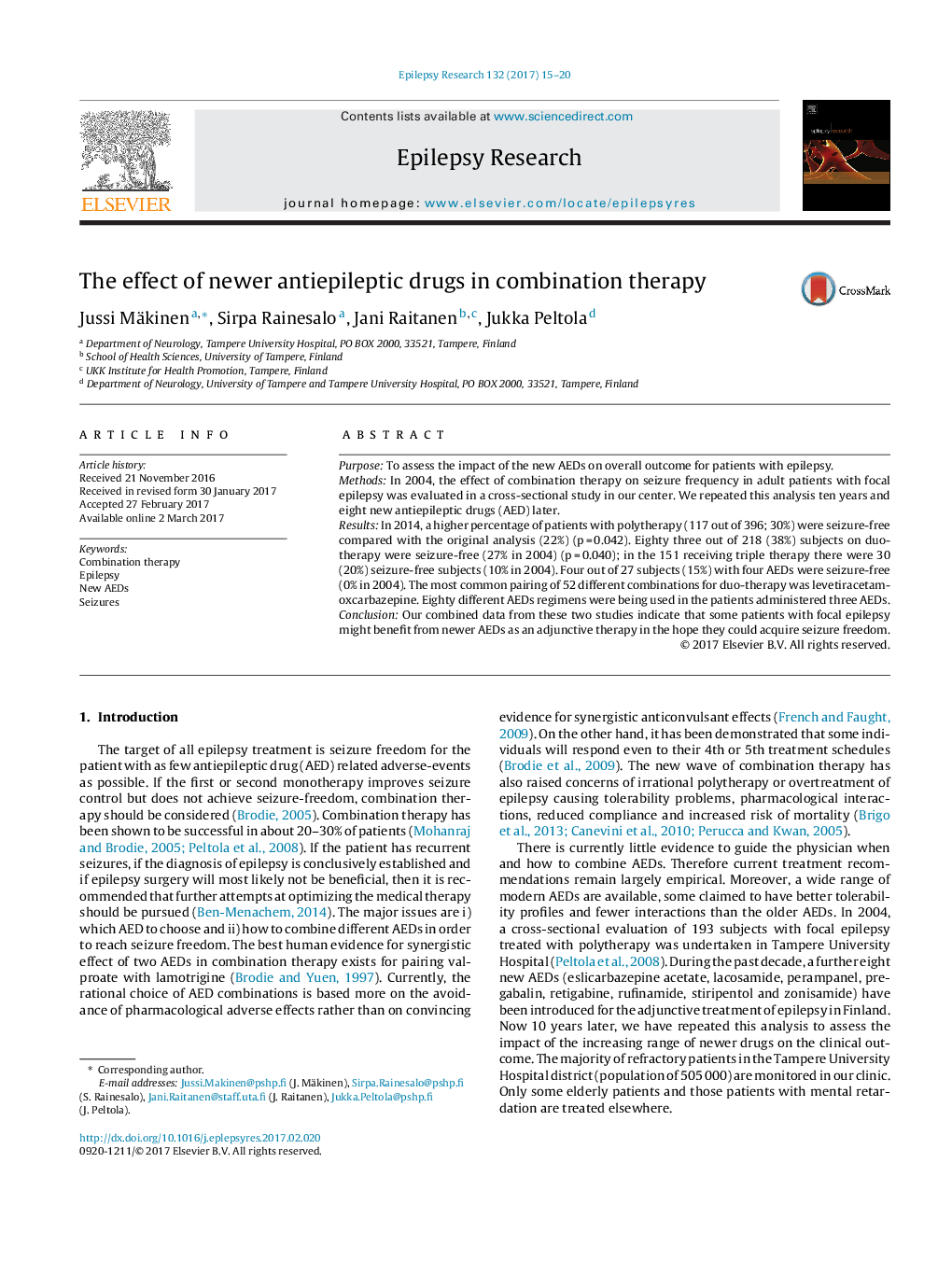| Article ID | Journal | Published Year | Pages | File Type |
|---|---|---|---|---|
| 5628676 | Epilepsy Research | 2017 | 6 Pages |
â¢Proportion of patients benefiting from combination therapy has increased during the last decade.â¢The rate of seizure-free patients with duo-therapy increased from its 2004 value of 27%-38% in 2014.â¢Some of the newer AEDs might be useful in combination therapy on the route to seizure-freedom.
PurposeTo assess the impact of the new AEDs on overall outcome for patients with epilepsy.MethodsIn 2004, the effect of combination therapy on seizure frequency in adult patients with focal epilepsy was evaluated in a cross-sectional study in our center. We repeated this analysis ten years and eight new antiepileptic drugs (AED) later.ResultsIn 2014, a higher percentage of patients with polytherapy (117 out of 396; 30%) were seizure-free compared with the original analysis (22%) (p = 0.042). Eighty three out of 218 (38%) subjects on duo-therapy were seizure-free (27% in 2004) (p = 0.040); in the 151 receiving triple therapy there were 30 (20%) seizure-free subjects (10% in 2004). Four out of 27 subjects (15%) with four AEDs were seizure-free (0% in 2004). The most common pairing of 52 different combinations for duo-therapy was levetiracetam-oxcarbazepine. Eighty different AEDs regimens were being used in the patients administered three AEDs.ConclusionOur combined data from these two studies indicate that some patients with focal epilepsy might benefit from newer AEDs as an adjunctive therapy in the hope they could acquire seizure freedom.
